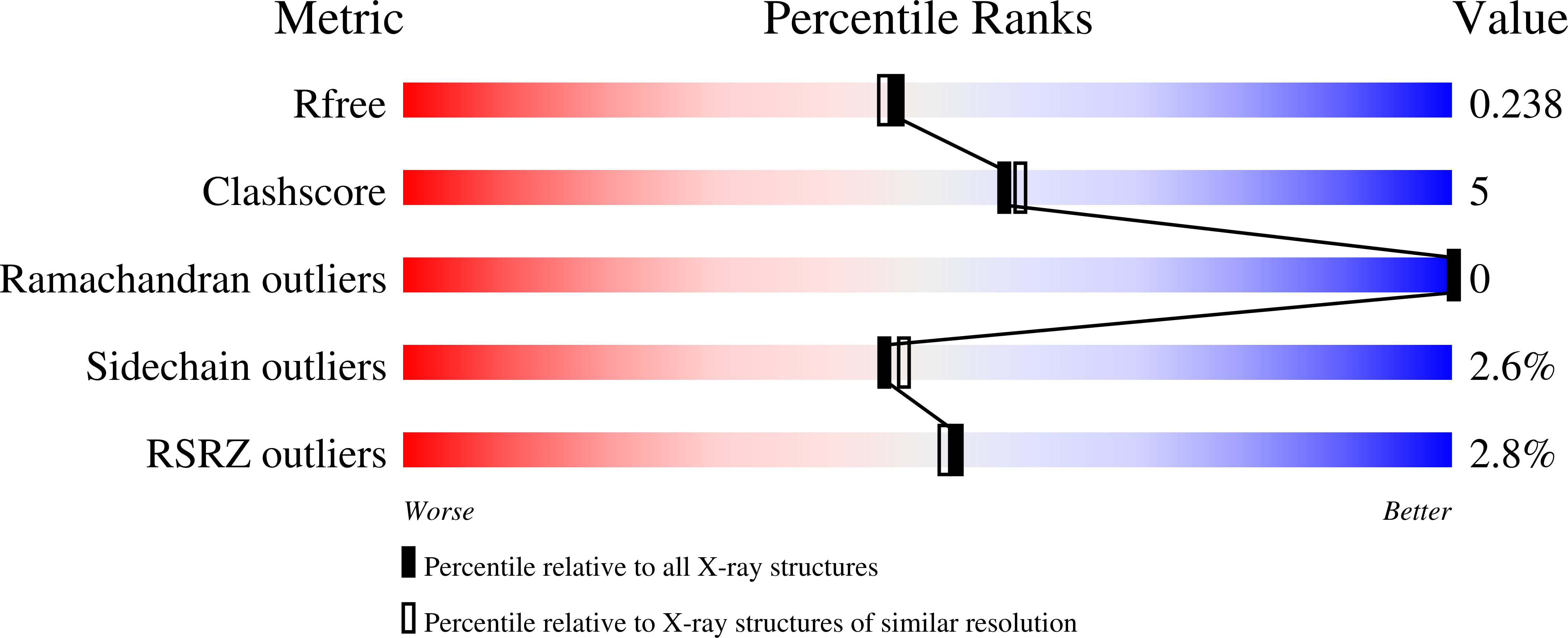Glycans Confer Specificity to the Recognition of Ganglioside Receptors by Botulinum Neurotoxin A.
Hamark, C., Berntsson, R.P., Masuyer, G., Henriksson, L.M., Gustafsson, R., Stenmark, P., Widmalm, G.(2017) J Am Chem Soc 139: 218-230
- PubMed: 27958736
- DOI: https://doi.org/10.1021/jacs.6b09534
- Primary Citation of Related Structures:
5TPB, 5TPC - PubMed Abstract:
The highly poisonous botulinum neurotoxins, produced by the bacterium Clostridium botulinum, act on their hosts by a high-affinity association to two receptors on neuronal cell surfaces as the first step of invasion. The glycan motifs of gangliosides serve as initial coreceptors for these protein complexes, whereby a membrane protein receptor is bound. Herein we set out to characterize the carbohydrate minimal binding epitope of the botulinum neurotoxin serotype A. By means of ligand-based NMR spectroscopy, X-ray crystallography, computer simulations, and isothermal titration calorimetry, a screening of ganglioside analogues together with a detailed characterization of various carbohydrate ligand complexes with the toxin were accomplished. We show that the representation of the glycan epitope to the protein affects the details of binding. Notably, both branches of the oligosaccharide GD1a can associate to botulinum neurotoxin serotype A when expressed as individual trisaccharides. It is, however, the terminal branch of GD1a as well as this trisaccharide motif alone, corresponding to the sialyl-Thomsen-Friedenreich antigen, that represents the active ligand epitope, and these compounds bind to the neurotoxin with a high degree of predisposition but with low affinities. This finding does not correlate with the oligosaccharide moieties having a strong contribution to the total affinity, which was expected to be the case. We here propose that the glycan part of the ganglioside receptors mainly provides abundance and specificity, whereas the interaction with the membrane itself and protein receptor brings about the strong total binding of the toxin to the neuronal membrane.
Organizational Affiliation:
Department of Organic Chemistry, Arrhenius Laboratory, Stockholm University , S-106 91 Stockholm, Sweden.
















